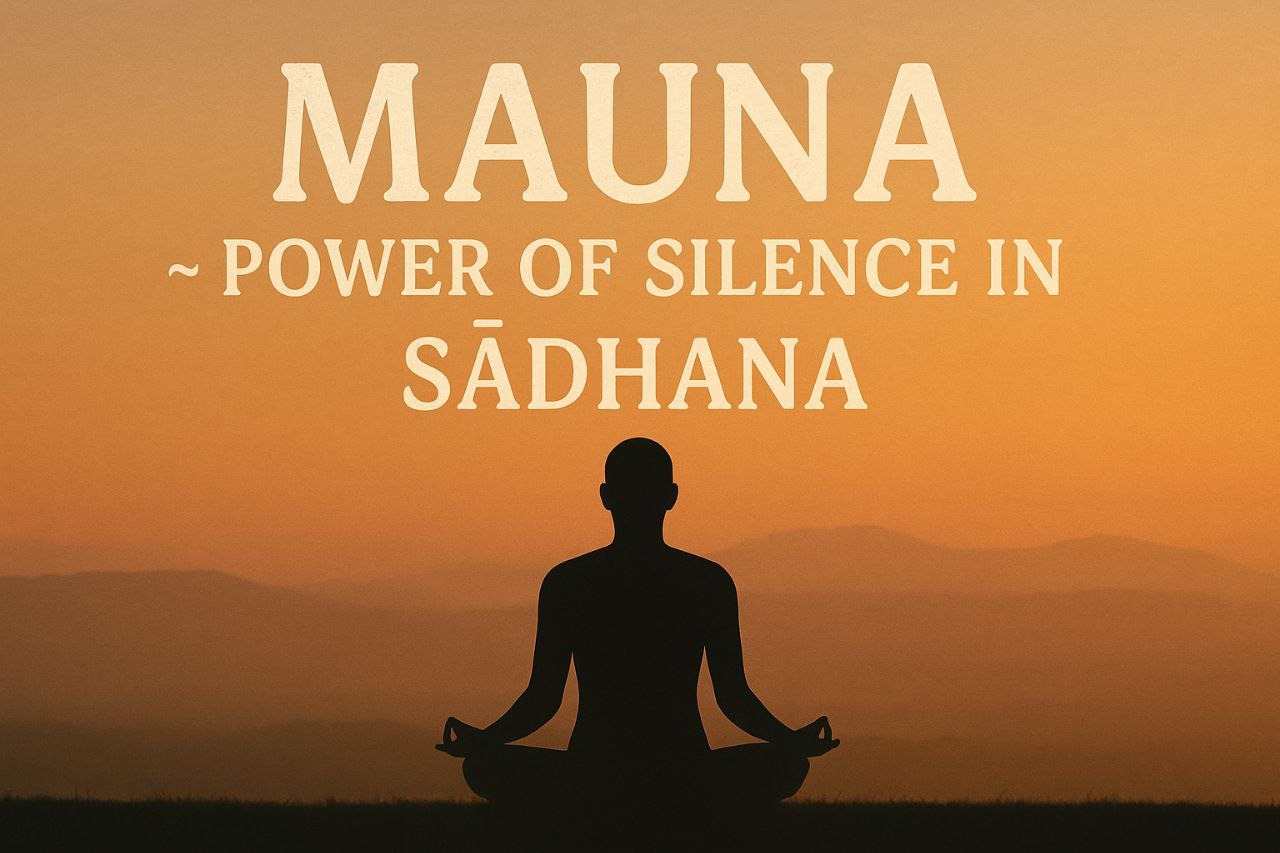Mauna ~ Power of Silence in Sādhana

In the realm of Sanatan Dharma, where the eternal truths of existence are revealed not merely through spoken word but by lived experience, Mauna (Silence) is one of the most revered and powerful practices of Sādhana (spiritual discipline). Silence is not merely the absence of sound, it is the gateway to the Self. In silence, the seeker hears the soul.
What Is Mauna?
Mauna, derived from the Sanskrit root “mun,” meaning “to contemplate,” refers to a voluntary spiritual practice of observing silence. It is often mistaken as just refraining from speech, but true Mauna is the silence of the tongue, mind, ego, and desires.
"True silence is not in the absence of words, but in the absence of noise within." ~ Adarsh Singh
Mauna is an inward journey. It is the moment the seeker turns away from the external world and plunges into the ocean of inner stillness, where truth is not spoken, it is realized.
Silence in the Sanatan Scriptures
In the Bhagavad Gita, Lord Krishna says:
"Maunam Chaiva Asmi Guhyanam"
~ “Of secrets, I am the silence.”
Here, Krishna asserts that in the highest of mysteries, silence itself is divine.
Similarly, in the Upanishads, the highest truth (Brahman) is described as “neti neti” (not this, not that), a silence beyond definitions. Silence is the language of the Absolute.
Why Is Mauna Essential in Sādhana?
1. Stillness of the Mind
The mind is constantly engaged in inner chatter. Mauna helps to gradually calm these waves, preparing the aspirant for meditation and deep concentration.2. Clarity of Thought
In silence, unnecessary thoughts settle, allowing clarity to arise. Insight emerges effortlessly3. Purification of Speech (Vāk Shuddhi)
One who observes silence gains control over speech. This control refines the use of words into powerful, truth-aligned expressions.4. Opening the Door to Self-Inquiry
With speech subdued and the mind quiet, the question "Who am I?" can echo within without interruption, leading to glimpses of the Self
"In silence, the soul sings. In stillness, truth whispers. In Mauna, we return home." ~ Adarsh Singh
Levels of Mauna
1. Vāk Mauna (Verbal Silence)
Beginning with physical silence helps to develop restraint and awareness of habitual speech.
2. Manasika Mauna (Mental Silence)
Going deeper, one begins to observe and reduce inner dialogue.
3. Ātmika Mauna (Spiritual Silence)
The ultimate silence, merging the mind into the Self. This is the silence of pure Being.
How to Practice Mauna?
Set a time daily for 15-30 minutes to remain completely silent, avoiding speech, phones, and even writing.
Observe the mind without judgment. Watch thoughts rise and fall like waves.
Engage in meditation or breath awareness during this time.
Begin with one day a week of total silence if possible (e.g., Sundays).
Let silence be a conscious choice, not a compulsion.
Silence in Daily Living
Mauna is not meant for caves alone. You can practice “Inner Mauna” even in a bustling world, by pausing before responding, by listening deeply, and by allowing silence to punctuate your day. Silence adds depth to life, just as stillness gives meaning to movement.
"The space between two notes creates music; the space between thoughts creates wisdom." ~ Adarsh Singh
In a world addicted to noise and expression, silence is revolutionary. It is in the sacred womb of silence that true wisdom is conceived. Mauna is the bridge between the finite and the infinite, between the mind and the soul.
Let your silence be full, not empty.
"When you speak, you share what you know. When you're silent, you receive what is eternal." ~ Adarsh Singh
Wed Jul 23, 2025
